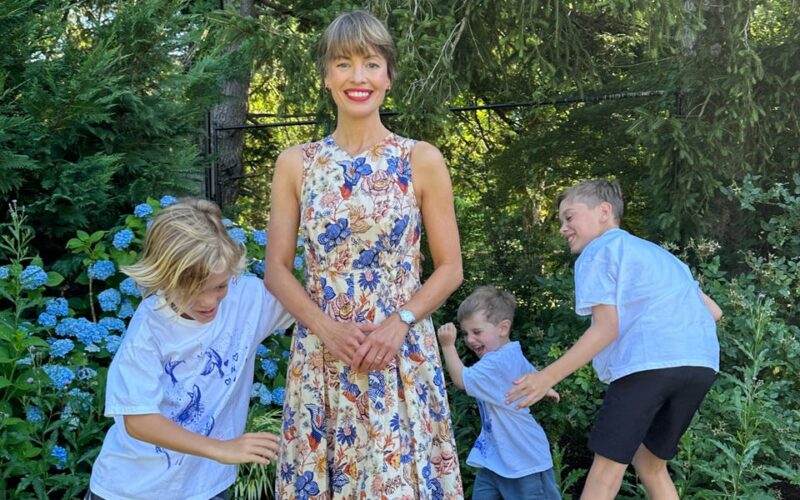I’m originally from Finland, and after a decade of ticking off my career goals in the US, I fell for an American man, my neighbor in our Brooklyn apartment building. It seemed like I had just about reached everything I had wished for when my life took a turn.
After I became pregnant with our first son, I was shocked to learn how much harder motherhood was in the US and how much more challenging it was to balance work with family compared to the Nordics.
Taking time off from work to have kids is encouraged in the Nordics
In the US, I was surprised to see and experience how rare paid parental leave was and how short it was: new moms — and dads — are quickly pushed back to work almost as if they hadn’t had kids.
I tried that (even though my Nordic friends called me barbaric) and quickly burned out. My Finnish friends, on the other hand, were thriving instead of just surviving through motherhood. They first solely focused on family for the first 14 months due to long parental leaves and then seamlessly returned to their jobs, even at executive levels. They told me successful career arcs are waves rather than hockey sticks. Inspired, I looked for a family-friendly company in my industry to try to transition to but came up empty-handed.
I had to decide whether to be a stay-at-home mom or a working mom
Unlike in Finland, this is one of the biggest decisions new American mothers make. Due to the work culture in the US, choosing a career requires giving up most of the time with your child, and staying at home requires giving up work interests. In Finland, most women return back to work, as it doesn’t require giving up too much family time with the 37.5-hour workweek, long vacations, and option for part-time schedules.
I understood I couldn’t find that in the US, but I hadn’t realized I would have to give up so much more than time with my kids just to return to work — I had to give up most of my salary. After we had had two kids, I was offered an exciting new job opportunity with fantastic pay. Yet, after I calculated the cost of two kids in nursery school along with a full time nanny, there was nothing much left — except my husband’s salary — to live on. I still almost took the job, but in benefits negotiations, I was told there would be “no flexibility.” That was it for me.
American parents do a lot for their kids
American parents around me tend to care for their children by doing a lot for them and by removing discomforts and obstacles, while in the Nordics, parents show care by both letting and pushing their kids to do what they are capable of to prepare them for the world.
I have accidentally baffled many American parents by raising my children like kids are raised in the Nordics, embracing all types of weather and encouraging them to be independent. We live within walking distance of their school, so, wearing the appropriate gear, we walk in rain, shine, snow, or sleet. I have let my boys race well past me on scooters, even as toddlers, and run around playgrounds as I sit on the sidelines.
At elementary age, I have them schedule their playdates so they call their friends’ parents to organize them. And, after school, I suggest they skip homework to get that essential playtime outside after school instead (the American school day is two to three hours longer than the Finnish one, with less recess). And, if our elementary-age children don’t want to join us when we run errands, we welcome them to stay home — alone.
They thrive with autonomy, and my husband and I do, too. However, finding opportunities for them to develop their independence is a challenge: I often get asked if my kids are indeed mine when I’m only a short distance away or asked to supervise them, even if I can see them but not hover over them.
I do less parenting in Finland
Back in the US, I have decided to consciously create more bandwidth by opting out of many voluntary but culturally encouraged American mom tasks, from participation in school activities during the daytime to scheduling — and attending — countless travel sports and choosing simpler commitments instead.
I also don’t spend much time entertaining my kids, allowing them to take the lead in creating their own fun.
However, I help my kids master independence skills, like the autonomous morning routine, so I can drink my coffee hot, workout, and get ready — while they get themselves ready. And, to balance the load of the invisible work, I have outsourced things that can’t not be done to my husband, such as school registrations and passport renewals because they have motivating natural consequences.
I came to the US for the American dream but found something else that led me to thrive: Nordic principles of balance, bandwidth, and autonomy — and the innovative spirit of American moms. In the US, I see massive amounts of brilliance hiding in plain sight: well-educated career women who are not able to use their talents because, after kids, it’s simply too exhausting on all levels. So they decide to work outside the system, and completely reinvent themselves — and, so did I.
Source link
lol

